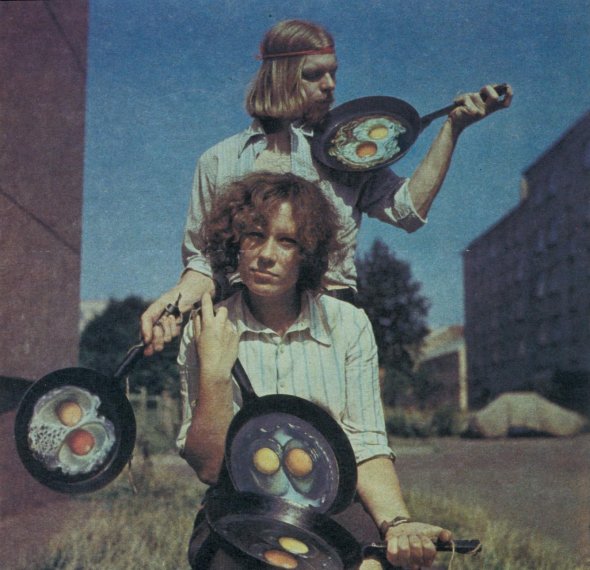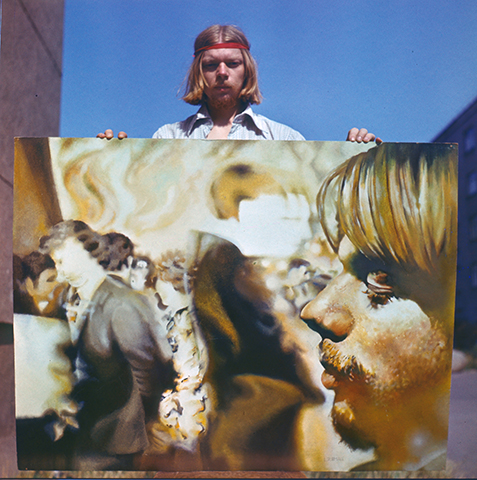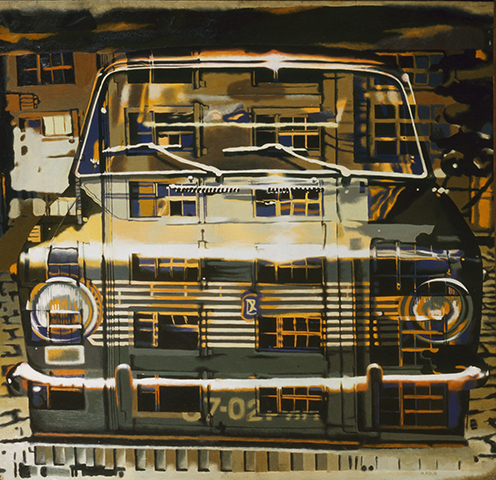Exhibition by painters Līga Purmale and Miervaldis Polis
This exhibition of photorealist works by fourth year Art Academy students Miervaldis Polis and Līga Purmale was the first serious manifestation of its kind not just in Soviet Latvia, but also in the wider region. It was unprecedented for students to organize an exhibition on their own initiative open to all outside the academy. To make it happen, the artists had to collect recommendations and permits from almost ten different institutions. The artists vividly recall[1] an episode in which members of the Central Committee suddenly turned up at the exhibition, apparently on the basis of an anonymous report that one of the paintings made a mockery of Lenin. But while the painting Brass Band (1974) did have a figure of a little trumpet player in a peaked cap in the foreground, it bore no resemblance to the proletariat leader.
At one of the exhibition’s public discussions, the artists were approached by Estonian art enthusiast Matti Miliuss, who subsequently arranged for the exhibition to be presented at the Deaf Persons’ Society in Tartu and the Tallinn Art Institute in Estonia.
The exhibition gained a lot of public attention despite receiving no press coverage. This resonance was connected with the unabashedly photorealist and hyperrealist manner of painting. The exhibited works formally complied with the official line of Soviet art—realism—but in reality they were much closer to contemporary trends in Western art. The professional art scene greeted the young artists with a mixture of genuine admiration and resigned or harsh criticism, but in time Purmale and Polis would come to be regarded as masters of the genre.
An interview with M. Polis in May, 2011.
Date: August 1974
Participants: Līga Purmale and Miervaldis Polis
Location: Riga Photo Club in the Central Printing Workers’ Club





